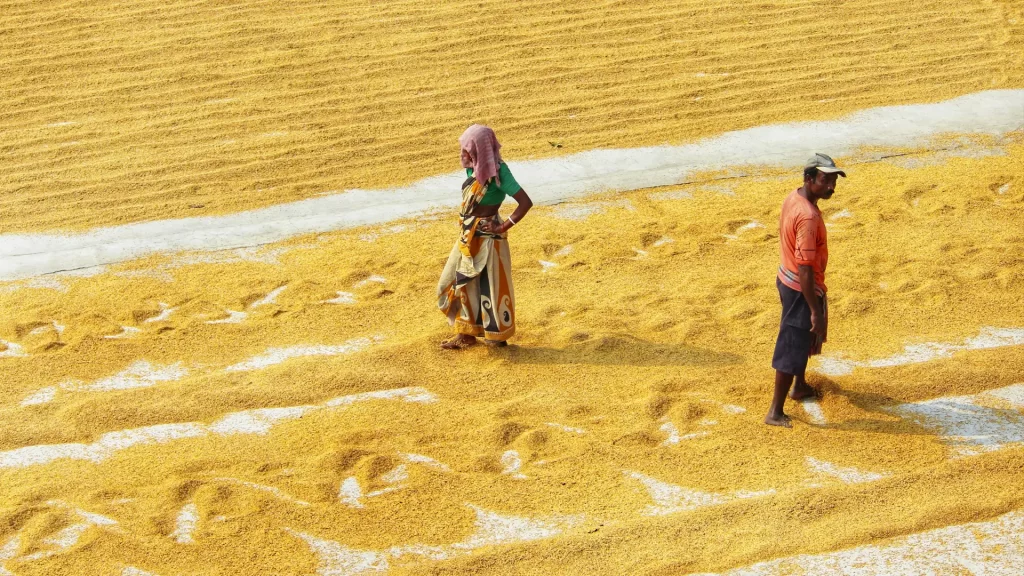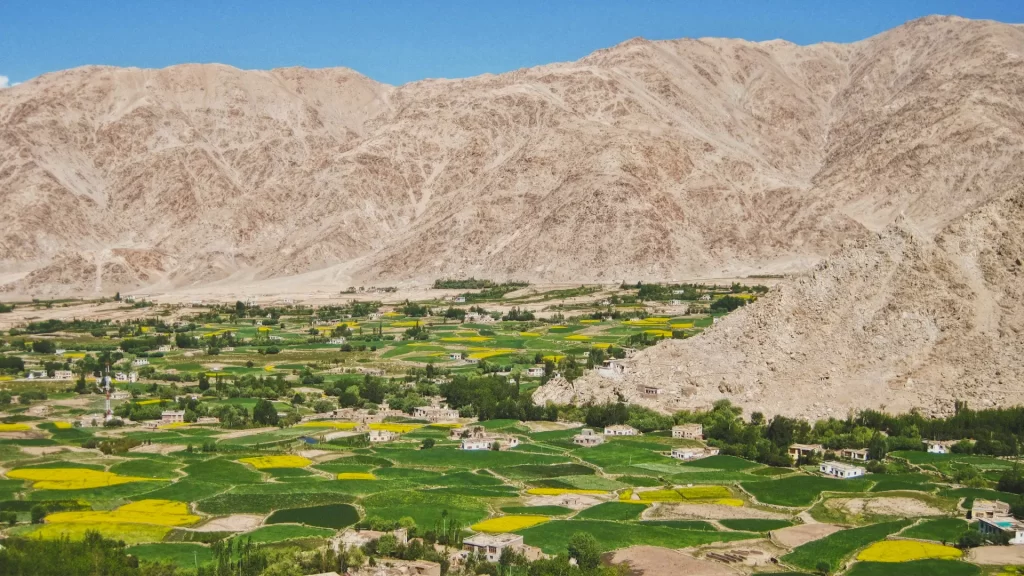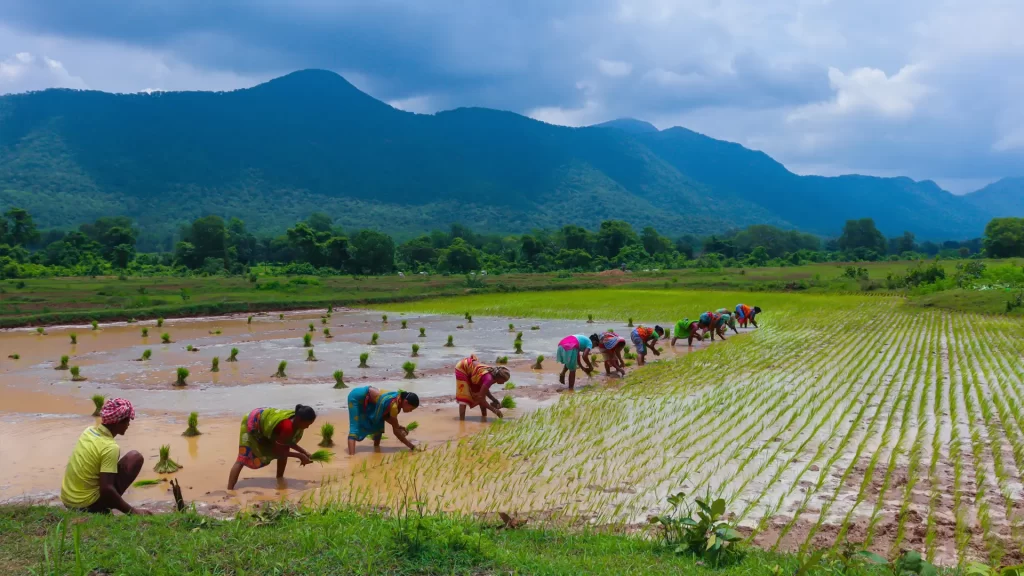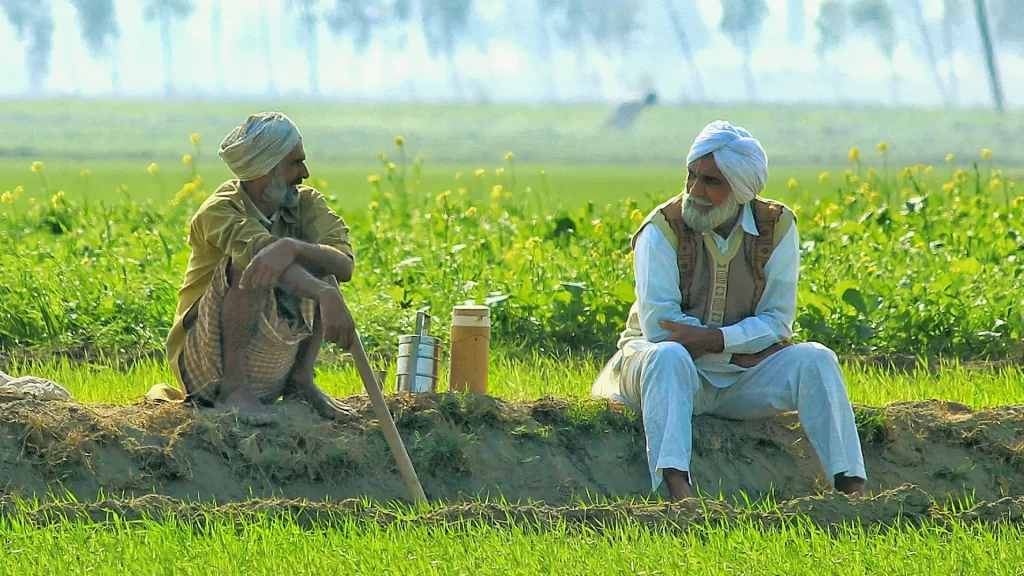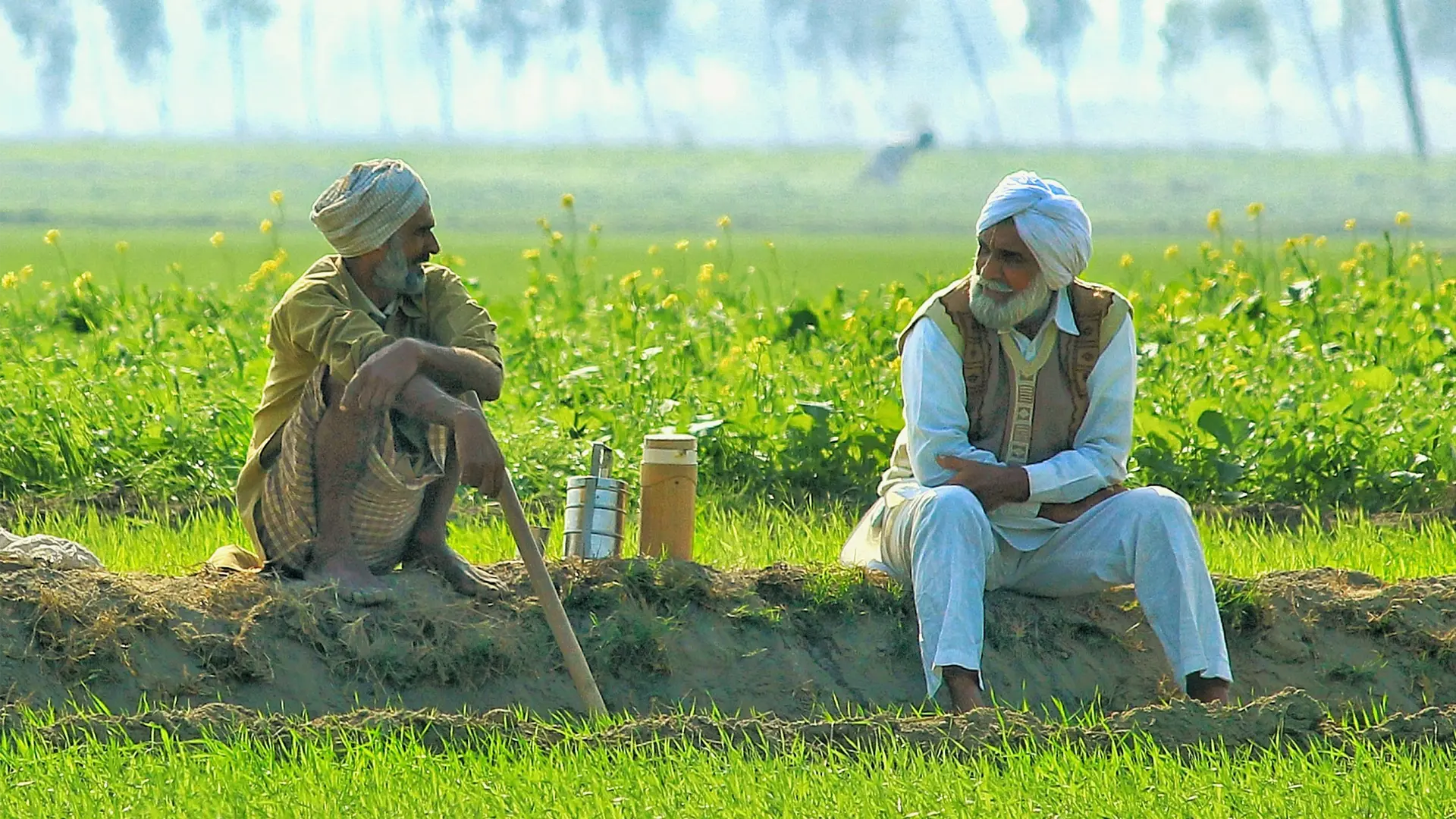On the fertile plains between the hills of Chhattisgarh, India, blockchain now decides which seeds reach farmers. This unlikely bond of ancient agriculture and cutting-edge technology reveals something profound about modern India: a country capable of leaping centuries in a single bound. While 86% of farms remain smaller than two hectares, peasant plots that would fit in a Dutch greenhouse, the subcontinent’s food processing industry has quietly ballooned to $345 billion (bn) in 2024 and is projected to reach $700bn by 2030, according to India’s Chamber of Commerce and Industry. For the agro-food industry, this seeming enigma presents an alluring puzzle: How to turn India’s existing inefficiencies into a profitable banquet.
A paradox worth billions
India produces enough food to feed itself and then some. Its 330 million tonnes of annual grain output, up 25% since 2013, could theoretically still its appetite. Yet 36% of Indian children remain malnourished, and $17bn worth of perishables are lost before reaching a fork. While these numbers highlight a sobering reality, it is as much an opportunity in disguise.
Consider the data that matters. Urban Indian families now allocate 42-45% of their food budget on processed foods, double the proportion of two decades ago. The world’s largest milk producer and dominant pulse supplier is simultaneously importing $38.5bn worth of agricultural products while exporting $51.9bn. Agricultural exports grew 6.47% last year (fiscal year 2024-25), while the total of India’s merchandise trade stagnated. Slowly but surely, India’s agricultural value chain is ironing out its creases and starting to feed both its domestic and international markets.
Key indicators point to an accelerating momentum in agri-innovation. The Indian precision agriculture market, currently valued at just over $300 million, is projected to double by 2032. Government initiatives like Digital India expand internet connectivity in rural areas and promote the use of mobile applications for agricultural development. Climate-controlled greenhouses are sprouting in Rajasthan, rewarding bold entrepreneurs with millions. India is digitising faster than its infrastructure can keep up, creating exactly the sort of market gaps that well-positioned investors can leverage.
Export ambitions meet domestic reality
India’s agricultural trade stance increasingly reflects a more long-term and calculated positioning. Despite being home to 1.4 billion mouths, the country exports more agricultural products than most European nations produce. Rice alone accounts for $12.5bn of exports in 2024, while marine products are projected to hit $7.4bn this year. And yet these impressive numbers represented just 2.2% of global agricultural trade in 2024, a market share that seems disproportionally modest for a country of continental scale.
The government’s target of $100bn in high-value agricultural exports by 2030 signals something more ambitious than addressing domestic insecurity. India is positioning itself to serve premium international markets. Cereal exports doubled from $8.4bn to $15.2bn between 2018 and 2022. Sugar exports surged 414% to $6.6bn over the same period. Prime examples of industrial agriculture learning to dance.
Technology adoption tells the same story. 60% of food processors plan AI integration by 2025. The government has embraced everything from blockchain seed distribution to satellite-guided irrigation. India ranks 6th globally in terms of climate vulnerability, and it is starting to act as a catalyst rather than only a constraint. With the increasing risk of floods and droughts on the horizon, farmers are increasingly understanding the urgency to adopt today’s modern technologies.
A continent disguised as a country
India’s agricultural map defies uniform classification, as regional economies evolve around their own crop specialisations, climate challenges, and commercial logic.
The North
Punjab’s farmers have mastered what geography gave them: the state produces yields up to 5,390 kg of wheat per hectare, among the world’s highest, precisely because of its climate and soils. Yet this geographic advantage has created its own constraints. Decades of intensive cultivation have pushed groundwater tables to concerning depths, while 2025’s unprecedented floods destroyed 450,000 acres, highlighting how extreme weather now compounds existing agricultural pressures. The challenge is optimising what works rather than abandoning proven systems.
This is where Dutch expertise can become relevant. Not their famed victory over the North Sea, but their centuries of managing rivers, polders, and agricultural watersheds. Dutch innovations in precision irrigation and water recycling could help northern India maintain its productivity edge while building sustainable resilience against both scarcity and abundance. The question is whether such solutions can be adapted to operate profitably at Punjab’s scale and intensity.
The South
If the north is India’s factory floor, the south is its innovation lab. Karnataka, Tamil Nadu, and Andhra Pradesh host over 35% of India’s food processing infrastructure. Karnataka’s 246,000 hectares of coffee plantations produce beans that compete globally, while Andhra Pradesh’s fishing industry contributes 40.9% of the national marine output.
The Centre
Madhya Pradesh produces 22% of India’s pulses while earning the nickname “Soy State”. It’s 152 million hectares under cultivation, half the state’s total area, making it agriculture’s geographic anchor. Lower land costs than the coastal states, combined with excellent connectivity, position it as the natural headquarters for companies looking to access all of the country’s cardinal directions.
The East
India accounts for 25% of the world’s rice production, and West Bengal produces over 15 million tonnes of rice annually, covering 15% of national output. But 40% of agricultural land lies fallow after harvest, an untapped potential in one of its clearest forms. Traditional varieties like Gobindobhog command premium prices, suggesting a market sophisticated enough to pay for quality. The challenge lies in bridging the gap between artisanal excellence and industrial scale.
The West
Maharashtra and Gujarat host India’s most sophisticated agricultural infrastructure. Mumbai’s financial networks, Gujarat’s port connectivity, and Rajasthan’s desert innovators create natural advantages for export-oriented operations. When Rajasthan farmers achieve millionaire status through polyhouse cultivation, it signals a regional economy ready for systematic upgrade.
Three doors to growth
The keen eye can see three distinct pathways into India’s agricultural complexity:
The greenhouse revolution
Protected cultivation covers just 50,000 hectares, less than 1% of India’s agricultural area. Yet where it has been implemented, the results are compelling (see HortiTechIndia link). The trick lies in resisting the urge to over-engineer. Indian farmers need robust, repairable solutions, not space-age technologies that break down under challenging conditions such as dust storms. Companies have found the tech sweet spot between sophistication and simplicity, such as modular steel water tanks with evaporation-proof covers or climate systems that require only “a few settings” to optimise automatically.
Precision meets monsoon
When Dutch water management meets Indian scale, it creates compelling mathematics. Although fewer than 20% of farmers currently use digital technologies, this does suggest considerable room for Dutch sensor and analytics companies to expand their footprint. When 62% of agriculture depends on monsoons that arrive when they please, water-efficient technologies become existential necessities rather than nice-to-have upgrades.
Cold chain, hot profits
Post-harvest losses for cereals, pulses, fruits, and vegetables range from 4–15% annually according to the India Ministry of Food Processing Industries. These numbers represent a volume that could feed Germany for a year. This waste is a $12 bn opportunity for companies that understand cold chains, processing equipment, and quality control. The establishment of 41 Mega Food Parks provides ready-made anchor points for comprehensive supply chain development. Tamil Nadu’s dedicated Food Processing and Agro Export Promotion Corporation shows state-level commitment to infrastructure investment. The essential building blocks are on offer; the challenge now is to translate them into coordinated execution.
Finding the right door
India’s agricultural labyrinth rewards long-term expeditions more than short-term adventurers. Expand your network and connect with us at our upcoming Trinity of Tomorrow event. Or opt for an exclusive One-on-One session with our Indian partners to understand more about local politics, regional preferences, and bureaucratic rhythms that determine the success or failure of ambitious plans.
After 50 years of emerging market experiences and partnerships across 25 countries, Larive has learned that successful market entry depends less on perfect products than on perfect partnerships. India’s agro-food transformation will happen with or without Dutch participation. For executives contemplating India’s agricultural landscape, the path forward is neither straightforward nor simple. But then again, the most profitable opportunities rarely are. The farmers of Chhattisgarh are already turning to blockchain to choose their seeds. The real question is whether Dutch innovation will be a part of their options.

